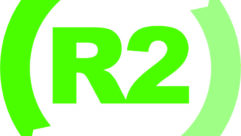
Expert Column: Home Schooling
Sep 1, 2007 12:00 PM,
By Bob Smith and Garth Powell
Understanding and selling power conditioning for home theaters.

Power managers such as the Panamax Max 7500-Pro protect your clients’ investment in high-end home theater devices.
When consumers go shopping for a new high-definition display, they are actually looking to buy the HD experience. What they don’t realize is there is a lot more to creating this experience than just buying an HDTV. Consumers often aren’t aware of the cables, receivers, and other components involved in a home theater system, which can lead to frustration when shopping at a retailer. As a result, many consumers have been turning to professional installers to give them the HD experience.
Clients place a great deal of trust in the installer’s specialized knowledge. With this trust comes a huge obligation on the installer’s part to give their clients the best experience possible. This means not only providing stunning detail and colors for the client’s display, but also protecting their investment. To do this, it is essential to implement power management into the home theater system.
EDUCATING CUSTOMERS
Unfortunately, power conditioners are not absolutely essential in making a home theater system power up and provide a picture, so clients are often unaware of their importance. Consequently, power management has to be sold to customers by experienced installers.
The key to selling power management solutions and providing clients with a reliable and fulfilling experience is having an understanding of the problems inherent in the power supply and how power conditioning addresses these problems — and then communicating this knowledge to the client.
The role of the power conditioner falls into two categories: protection and purification. The concept of power protection is one that consumers understand. However, there is often confusion as to how widespread the problem is. Some places are worse than others, but contamination is present everywhere. The fact is that our country has a 100-year-old power-grid infrastructure that has not been upgraded since its inception. It was made to power light bulbs and vacuum tubes, and while our technology has moved far beyond that, it is also more sensitive, leaving components quite vulnerable to surges and spikes.
Every AC outlet in the world gets dozens to hundreds of hits each day, and most of them are generated in the home itself. They result from washers, dryers, and other motorized appliances. Every time a motor turns on or off, it sends a spike through the home. Modern microchips are simply too sensitive to handle these surges and spikes. Devices such as DVD players and plasma displays will ultimately be ruined by this power contamination, and before that, they will behave temperamentally, preventing the client from receiving full potential out of their investment.
It is imperative to employ transient surge protection for these devices. Not only does this eliminate service calls for the contractor, but it also eliminates system downtime for the client.

Furman Sound IT-Reference 15i discrete symmetrical AC power source
Additionally, power needs to be purified for users to receive the optimal performance from equipment. This is a concept consumers don’t necessarily know about, and it is a little more difficult to understand. Switching power supplies adds noise to the power line. Half of the appliances in homes, such as computers and other consumer electronics, contain sitching power supplies. This noise affects virtually every element involved in a high-end audio or visual environment, and it ends up masking much of the detail needed for the best-possible sound definition and resolution.
A comprehensive power conditioner will filter out the AC noise present on the line. Filtering means that you take the noise present on an AC line and lower it in level to such a dramatic degree, and over such a wide range of frequencies, that it cannot contaminate a signal being captured or reproduced. The result is a stunning display with increased detail, bold colors, and an elimination of artifacts such as lines on the screen.
There are several ways to communicate the concept of noise to clients. One of them is to use an analogy, such as that of a premium car. In this analogy, the car is the home theater system. You don’t invest in a BMW or a Jaguar and then put root beer in the gas tank. At least, you don’t if you expect optimal performance. Instead, you would use premium gasoline to keep your car running as smoothly as possible. The same goes for home theaters. A high-end theater requires premium power in order to achieve peak performance.
Demonstration devices, such as noise sniffers, can be used to let clients experience AC noise. Such devices make static on the line audible to consumers. When power is run through a conditioner, the device shows that the noise has been eliminated. This demonstration helps the client visualize the problem of AC noise. The devices are portable, allowing the installer to take them on a site survey. They are especially useful at new homes, where there is a misconception that because the residence is new that the power will be better. In fact, there may be even more power contamination in such a location because of increased motorized environmental controls and microprocessors in new homes.
MAKING CHOICES
For installers, budgeting is always a concern, and choosing a power conditioner can often be daunting — it’s often difficult to determine which product is best while also factoring in cost. A good rule of thumb is to factor in five percent to 10 percent of your budget for power management. If you spend way less than five percent, the chances are that your client will not be getting the performance they paid for. If you spend more than 10 percent, the client may have issues with how much is going toward power conditioning.
When competing for an installation, some contractors leave out power conditioning, and thus come in at a lower price. By being able to communicate with the potential client about the importance of power conditioning, you not only demonstrate your expertise, but you also actively provide a method to protect their system, giving you the contract, and probably cutting down on service calls.
Bob Smithis VP of PSS and training for Panamax. Garth Powell is senior product designer/sales engineer for Furman Sound.










